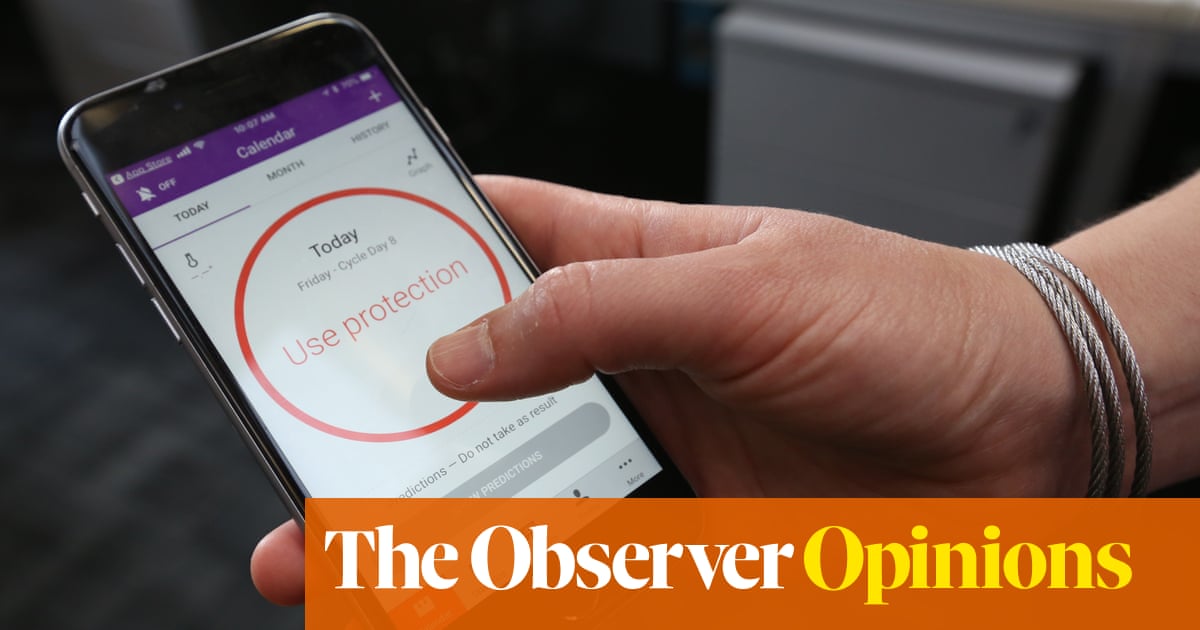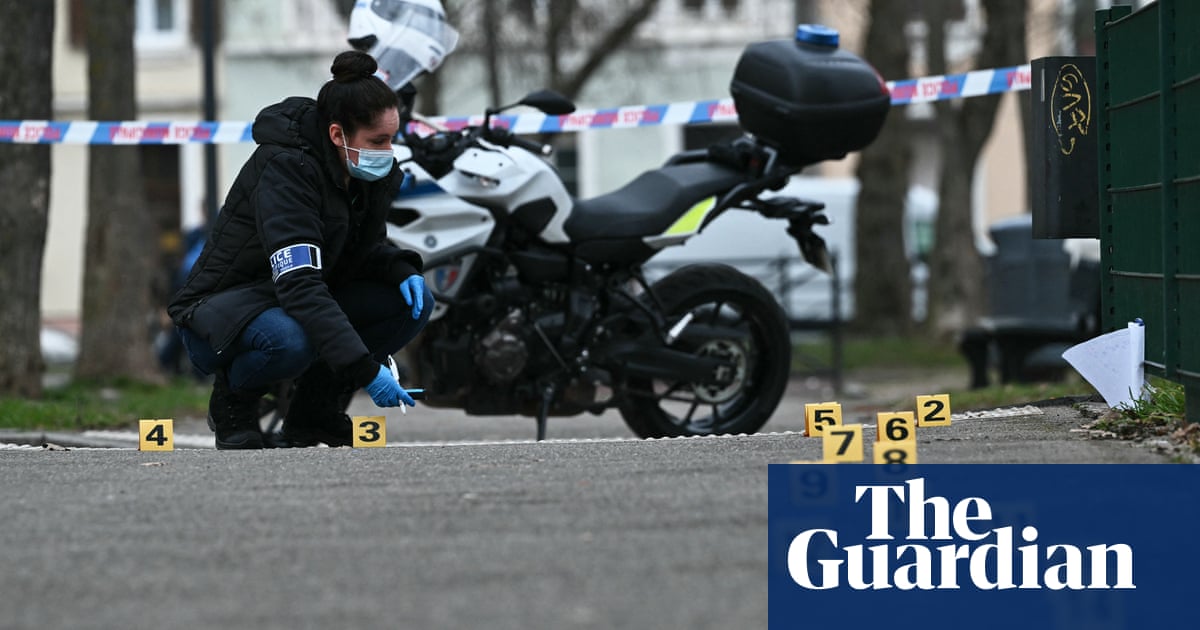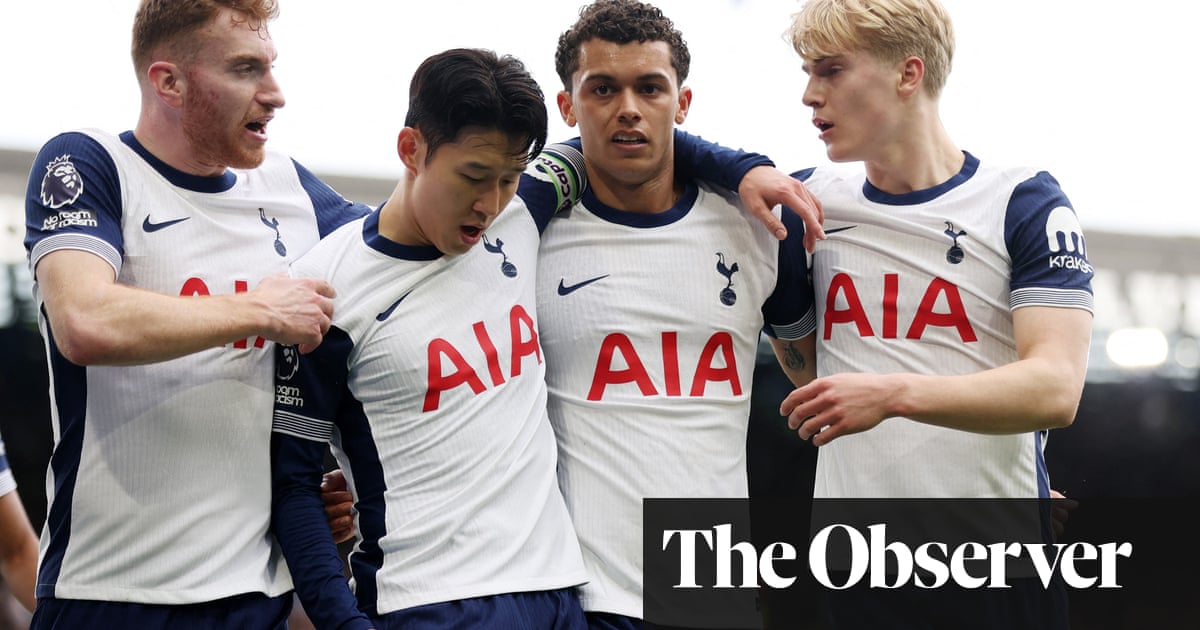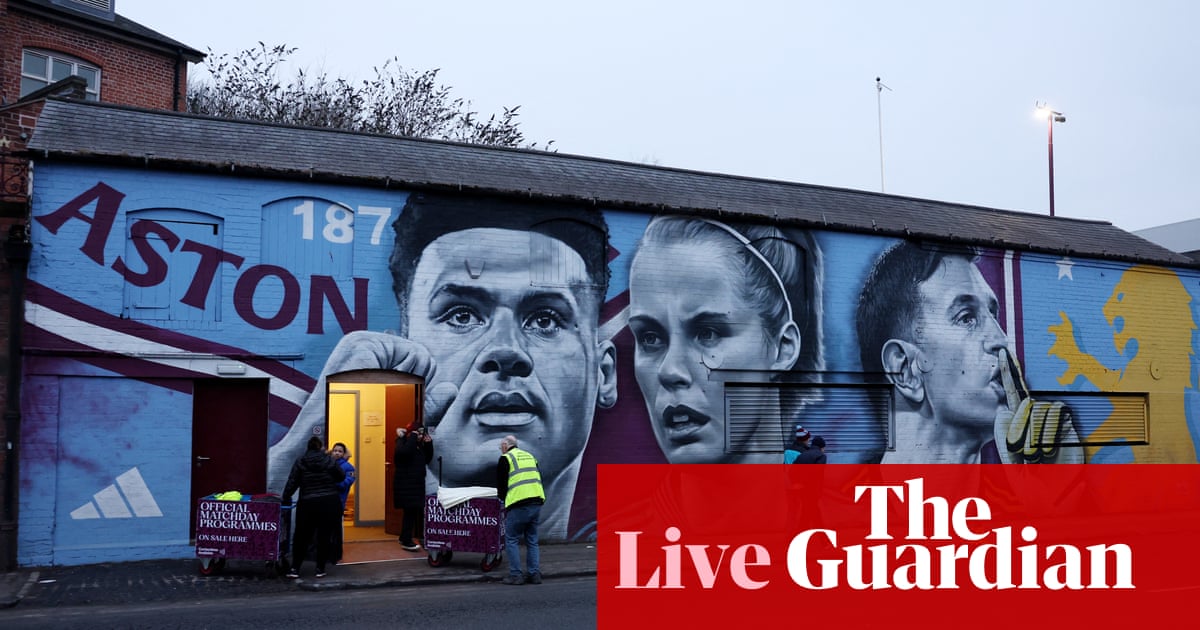Two plants sprouting from the rusty-red soil mark the grave behind the family’s mud house in the Mokwebu neighbourhood of Bamenda, capital of Cameroon’s embattled north-west. Morine Ngum’s husband, Calistus Nche, was killed in 2022 by soldiers of the country’s francophone-dominated government in a civil war he had joined four years earlier.

-
Calistus Nche, a separatist fighter shot by government troops in Bamenda in 2022. Photograph: Morine Ngum
“I didn’t want him to join the struggle but separatist fighters threatened to kill him and his entire family if he didn’t join,” Ngum says. “He keeps appearing to me in dreams, crying, apologising and saying he joined the struggle for our sake. My last daughter, who was so attached to him, is constantly sick, and would get up in the night shouting ‘Daddy, please take me along with you’.”
A few miles away, Sonita Kum mourns her husband, Nelson Afuh, a prison officer also killed in 2022. Afuh joined the army of Cameroon’s francophone president, Paul Biya, to quash the secessionist revolt in English-speaking areas.
“I felt like my world collapsed around me when my husband died,” says Kum. “I could barely recognise his legs in the coffin – the rest of his body had been shattered. Life is meaningless without him,” she says. Kum feels her husband died for a “just cause”, although she struggles financially to care for their four children.
Violence has torn through Cameroon’s two English-speaking regions – the north-west and south-west – since 2016, when the government imposed French-speaking teachers and lawyers on English-speaking schools and courts. Peaceful protests were met with military force and arrests. As security deteriorated, an anglophone separatist movement emerged calling for the independence of the region they called “Ambazonia”.

-
Demonstrators from the English-speaking parts of Cameroon protest in Bamenda against discrimination in favour of the country’s francophone majority. Photograph: AFP/Getty Images
The war has left more than 6,000 people dead and at least a million displaced internally, while more than 80,000 have fled to neighbouring Nigeria. Children have been deprived of school and the economy is in freefall. Broken and pitted roads have become a trademark of Bamenda – a symptom of the economic inequality anglophone activists are protesting over.
When authorities imposed a curfew on motorbikes in May to curb rising insecurity in the city, separatists responded by ordering drivers to respray taxis white and blue – colours of the flag of the revolt. Those who failed to comply had their cabs torched.
The eight-year conflict stems from Cameroon’s colonial past: first occupied by Germany from 1884 to 1916, the country was then a spoil of the first world war, divided between France and Britain. French Cameroon gained independence in 1960, joined by English-speaking Cameroon through a federation a year later.
In terms of territory and population, the francophone section represents 80% of the country while the remainder is English speaking. But a referendum in 1972 abolished the federal structure which had guaranteed rights of the anglophone minority.
‘They don’t see us as human’
In the rolling hills of the Menchum area of north-west Cameroon, “General Stone” commands 78 separatist fighters. He has lost 30 men to the conflict. Stone voices the anger that drove him to abandon farming to fight: “The francophone government has enslaved us for too long: we have many university graduates roaming the streets; people spend up to six years to obtain simple ID cards; elections are around the corner but we already know who will win. We’re fighting for our rights.”
Stone says he has repeatedly rejected his family’s requests to lay down his weapon – he is ready to die a “hero”. Life in the bush, he says, is challenging – with only plants to treat wounds, such as when a bullet ripped into his toe. The day starts with prayers, followed by breakfast, then planning.

-
Anglophone separatist fighters during reconnaissance training. The English-speaking part of Cameroon accounts for about 20% of the country. Photograph: Chris Anu
“Our objective is always to kill as many Cameroonian soldiers as possible,” Stone says. “I have the means to do that. We have enough ammunition sent in from abroad. Countless numbers have already been killed. They don’t see us as human, likewise, we don’t see them as one.”
Stone, a father of nine, claims the military harasses his family. “I know we will defeat them militarily one day. Once that is done, Ambazonia will be a paradise.”
Alabukam is a separatist area outside Bamenda where self-styled “Commander Striker” is in charge. The 27-year-old justifies the rebellion on several fronts: francophones “manipulate” the brains of anglophones; francophones squeeze their regions “dry” economically; and francophones deprive them of “lucrative jobs”.
Striker is cagey about his unit’s tactics but says: “What we want is separation and nothing else. We trap Cameroonian soldiers with bombs we fabricate. Countless of them have been killed.
“We blocked the road in Mbengwi for two good years. We also chased the military from their base at Commercial Avenue in Bamenda. We have enough ammunition, some of which we seized from the soldiers. We will never surrender.”
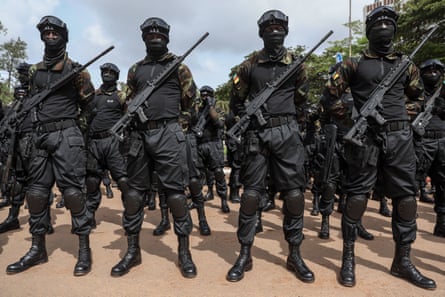
-
Members of the Bataillon d’Intervention Rapide (BIR), an elite combat unit of Cameroon’s armed forces. Photograph: AFP/Getty Images
If the separatists feel that the war is tilting in their favour, government soldiers think otherwise. One, speaking on condition of anonymity, says the army has a “significant edge”. The staff sergeant has fought in Bamenda and in the volatile Bamessing and Balikumbat areas in the north-west. An anglophone, he acknowledges he’s fighting against his “brothers and sisters”, but maintains “the army is there to do the job”.
“The army enjoys the collaboration of the population to put out the separatist fighters,” he says. “The only sensible solution to this conflict is dialogue. Violence can never satisfy nor benefit either side.”
Another soldier of the Cameroonian military now serving in the relatively peaceful southern Tiko area claims they often overpower the enemy in their encounters. “The separatist fighters are poorly trained,” he says. “For us [anglophone soldiers in the army], we don’t consider it a war but rather a misunderstanding between brothers.
“We try to make separatist fighters understand that we are one,” he says. “I advise them to give up fighting so that, together, we can build a better nation.”
In the Tshuobuh neighbourhood of Bamenda, two motorbikes rush past at breakneck speed. “Those are the boys [separatist fighters],” Josiah, a local guide whispers. “They are just back from buying cannabis. They are heading to the bush to consume it. They do that often.”

-
Potholes scar the roads in Buea. People see the state of the highways as symptomatic of the inequality that affects English-speaking regions of Cameroon. Photograph: Nalova Akua
Rebel fighters move freely here – under the nose of Cameroonian soldiers. “We know them,” Josiah says. Most young men joined the war out of desperation to escape the grind of their everyday life.
Simon Munzu, formerly of the Coalition of Cameroon Federalist Groups and Activists (CCFGA) and previously the UN secretary-general’s deputy special representative in Ivory Coast, identifies two factors behind the present conflict. The “programmatic domination, marginalisation, assimilation and takeover” of anglophone Cameroon by successive francophone-led regimes in Yaoundé and “excessive concentration of governmental power, authority and resources at the centre”.

-
Protesters display the Ambazonia flag during a demonstration in London calling on world leaders to act on the conflict in the region known as Southern Cameroons, or Ambazonia. Photograph: Zuma Press Inc/Alamy
He says: “Only federalism can address both of these root causes and pave the way to a durable peace and normalcy in all the 10 regions of Cameroon. Neither a decentralised unitary state nor the breakaway of parts of Cameroon can adequately address these root causes.”
Caught in the crossfire
With the world’s attention on other wars, Cameroonians are trapped in a forgotten standoff. Both sides have been accused of engaging in village raids, massacres, unlawful killings, looting, arbitrary arrests, and the use of torture and sexual violence.
Last year on 6 November, anglophone rebels killed at least 30 unarmed civilians in a south-west village in Mamfe. In June 2022, the separatists were accused of killing 32 civilians during a bloody attack in the Akwaya district.
Cameroon military and the Ambazonia secessionist leaders traded accusations after the killing of schoolchildren in 2020 and 2021. The government later admitted the army’s role in 21 deaths in February 2020 in Ngarbuh, in the north-west – a rare occurrence in a war where denial is commonplace. Witnesses say the soldiers accused villagers of sheltering terrorists.
Survivors of massacres accuse both sides of ignoring allegations of civilian harm. And memories are strong. On 14 February each year, the people of Ngarbuh visit the graves of the 21 who died in 2020, and have left a row of burned-out buildings standing as a memorial to the tragedy.
“I weep each time I set eyes on the mass graves of the innocent people,” says Ma-Shey Margaret. “All my neighbours were killed. I believe those people are in heaven because they were unjustly killed. Right now, we are still not safe: the military wants us to report the presence of the separatist fighters to them which is a risky thing to do. We live in constant fear.”

In Mamfe, where the November 2023 massacre took place, Franca Ojong still lives with the trauma. Armed men broke into her house at about 3am. “They shot my husband in the head and set the house on fire.”
By dawn, all that was left of her home and more than a dozen others was smoke and ashes. “I have nothing to eat. I have nowhere to stay. I need help,” she says.
Cooking fires scent the damp air in Buea, in the south-west, where Florence Digha’s 14-year-old son Mendi was taken away in 2018 by soldiers claiming he was a separatist fighter. His whereabouts remains unknown. Neighbours say he died in detention long ago, and that Digha refuses to believe it. “The pain of his disappearance is unbearable,” Digha says. “I last saw him being paraded as a separatist fighter by the military in a video online. I have searched for him in many detention facilities to no avail. I don’t know what to do.” Digha’s elder brother Fidelis has also been claimed by the conflict, killed by a stray bullet.
Her neighbour, John Tibah, describes how his 25-year-old son, Harison Tabe, detained in 2021, was tortured. “My son’s death pains me to this day; he was the pillar of my family,” he says.
Many young men with nothing to do with the rebels have been arrested or killed, he says. “The military considers every English-speaking person a separatist fighter. At times, soldiers disguise themselves in civilian attire to arrest anyone they suspect has links with the separatists. The military torments rather than protects us.”
The war is now at a deadly impasse. Separatist kidnappings and killings are crippling social, economic and cultural activities and disrupting livelihoods. The strategy has attracted harsh criticism even from within the secessionist leadership.
Christopher Fon Achobang, organiser of the Aspire movement pushing for the peaceful recognition of the sovereignty of Ambazonia, says “bad policies” associated with the separatists have turned many away from their cause.

-
Burned-out buildings and bloodstains on the ground after an attack by gunmen in Mamfe, south-west Cameroon on 6 November 2023. Photograph: Blaise Eyong
“Fighters who kidnap, take ransom and kill fellow Ambazonians have lost the grace and support of Ambazonians and their ancestors,” says Achobang, who recently resigned from the Ambazonia governing council in protest over the public killing of two civilians in Guzang. “These victims have friends and family who cannot embrace the struggle knowing that their loved ones would be subjected to such treatment,” says Achobang.

-
Chris Anu, leader of the interim Ambazonia government. Photograph: Chris Anu
“Leaders ordering such conditions that exacerbate the suffering of Ambazonians cannot be for Ambazonia. When you claim to be working for a people, you must secure their consent.”
Chris Anu, the US-based leader of the interim Ambazonia government, dismisses such concerns. “This is war, and when wars are fought people die or are killed from both sides. What were you expecting? A bloodless war?”
Anu says the struggle is against “annexation, colonisation and marginalisation”.
“It is also about justice and liberation. Cameroon did not expect war to last eight years. If they knew what they know now, they would never have declared war. Ambazonia is holding on to its own.”
This work was produced as a result of a grant provided by the Investigative Reporting Workshop for Journalists in Cameroon project, implemented by the Cameroon Association of English-Speaking Journalists (CAMASEJ)

 3 months ago
58
3 months ago
58




